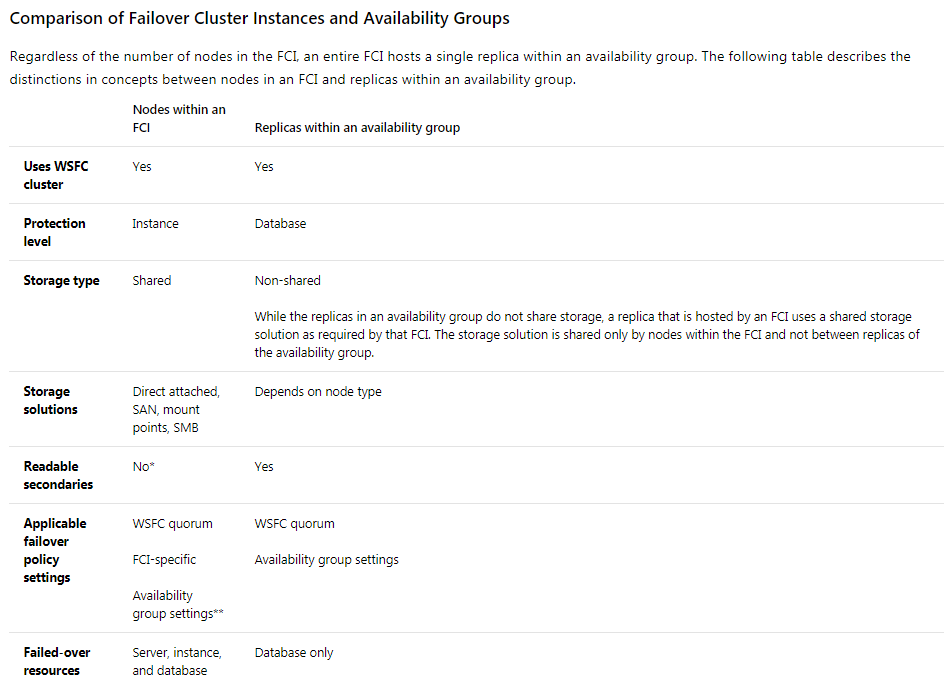What is the advantage of Always On Failover Clustering vs Always On Availability Groups?
Basic Always On Failover Clustering provides server level protection, (eg: 2 servers with 1 shared disk space; if server fails, it can utilize another server on the shared disk space).
Always On Availability Groups provides both disk storage DR and server-level HA Protection. It provides 2 servers with 2 shared space.
So what benefit functionally does Always On Failover Clustering have over Availability Groups? Looking at the chart comparison I see none. Seems Availability Groups is better.
 We utilize SQL Server 2016 Enterprise.
Thanks.
We utilize SQL Server 2016 Enterprise.
Thanks.
Reviewed documentation:
